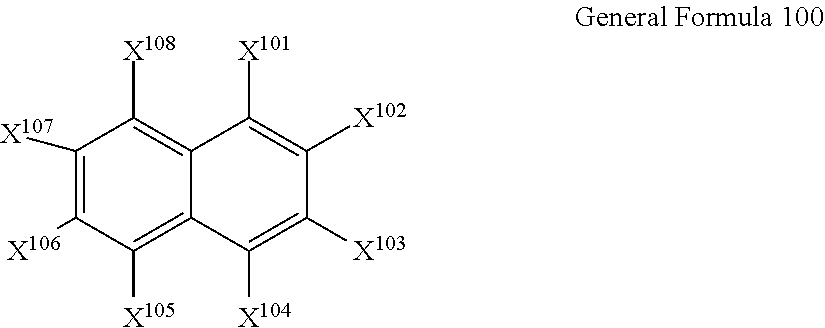Magnetic tape and magnetic recording and reproducing device
a magnetic recording and tape technology, applied in the field of magnetic recording and tape and magnetic recording and reproducing devices, can solve the problems of decreasing reliability of magnetic tapes and increasing errors, and achieve the effect of reducing the environment of low temperature and low humidity
- Summary
- Abstract
- Description
- Claims
- Application Information
AI Technical Summary
Benefits of technology
Problems solved by technology
Method used
Image
Examples
example 1
[0138]
[0139]With respect to 100.0 part of the oxide abrasive (an alumina powder) shown in Table 1, 2,3-dihydroxynaphthalene in the amount shown in Table 1 (manufactured by Tokyo Chemical Industry Co., Ltd.), 31.3 parts of a 32% solution of a polyester polyurethane resin having a SO3Na group as a polar group (UR-4800 manufactured by Toyobo Co., Ltd. (polar group amount: 80 meq / kg)) (solvent is a mixed solvent of methyl ethyl ketone and toluene), and 570.0 parts of a mixed solution of methyl ethyl ketone and cyclohexanone 1:1 (the mass ratio) as a solvent were mixed and dispersed by a paint shaker for the time shown in Table 1 (bead dispersion time) in the presence of zirconia beads (the bead diameter: 0.1 mm). After the dispersion, the centrifugal treatment was performed with respect to the obtained dispersion liquid by separating the dispersion liquid and the beads by the mesh. The centrifugal treatment was performed with CS150GXL manufactured by Hitachi Koki Co., Ltd. (the used rot...
examples 2 , 3 , 5
Examples 2, 3, 5 and Comparative Examples 1 to 8
[0201]A magnetic tape was manufactured in the same manner as in Example 1, except that various conditions shown in Table 1 were changed as shown in Table 1. All of the oxide abrasives listed in Table 1 are alumina powders.
[0202]In Table 1, in the comparative examples in which “no alignment process” is shown in the column of “formation and alignment of magnetic layer”, the magnetic tape was manufactured without performing the alignment process regarding the coating layer of the magnetic layer forming composition.
example 4
[0203]After forming the non-magnetic layer, the magnetic layer forming composition was applied on the surface of the non-magnetic layer so that the thickness after drying becomes 25 nm to form a first coating layer. The first coating layer was passed through the atmosphere at the atmosphere temperature shown in Table 1 (the drying temperature) without application of a magnetic field to form a first magnetic layer (no alignment process).
[0204]After that, the magnetic layer forming composition was applied on the surface of the first magnetic layer so that the thickness after drying becomes 25 nm to form a second coating layer. The homeotropic alignment process and the drying process were performed by applying a magnetic field having a strength shown in Table 1 in the vertical direction with respect to the surface of the second coating layer using opposing magnet in the atmosphere at the atmosphere temperature shown in Table 1 (the drying temperature) while the second coating layer was...
PUM
 Login to View More
Login to View More Abstract
Description
Claims
Application Information
 Login to View More
Login to View More - R&D
- Intellectual Property
- Life Sciences
- Materials
- Tech Scout
- Unparalleled Data Quality
- Higher Quality Content
- 60% Fewer Hallucinations
Browse by: Latest US Patents, China's latest patents, Technical Efficacy Thesaurus, Application Domain, Technology Topic, Popular Technical Reports.
© 2025 PatSnap. All rights reserved.Legal|Privacy policy|Modern Slavery Act Transparency Statement|Sitemap|About US| Contact US: help@patsnap.com

